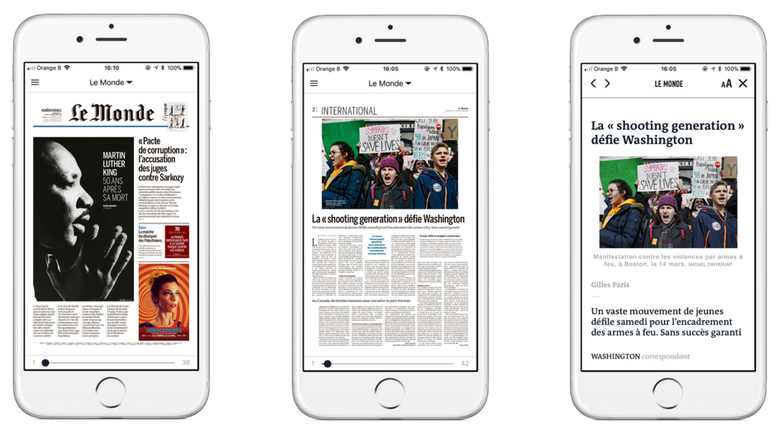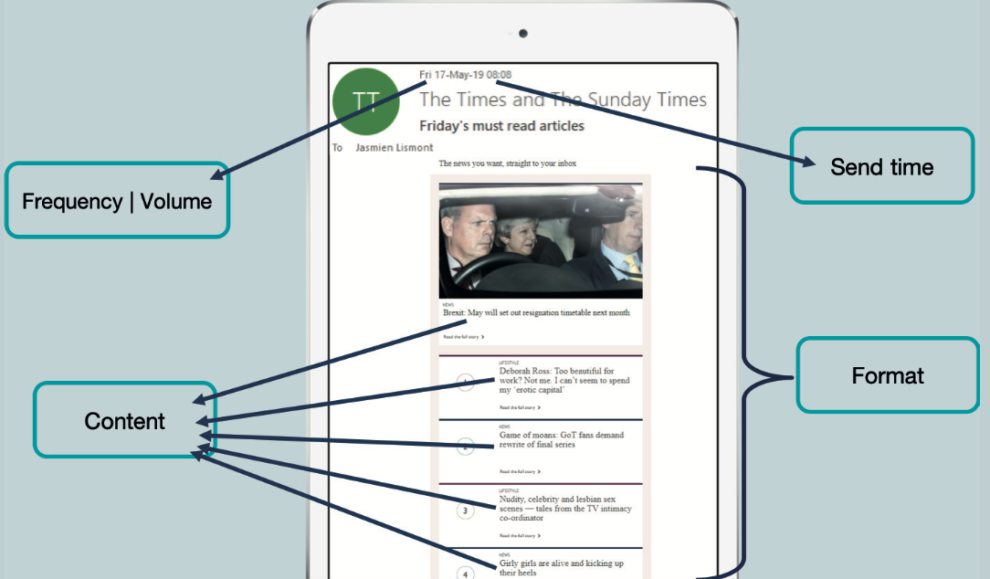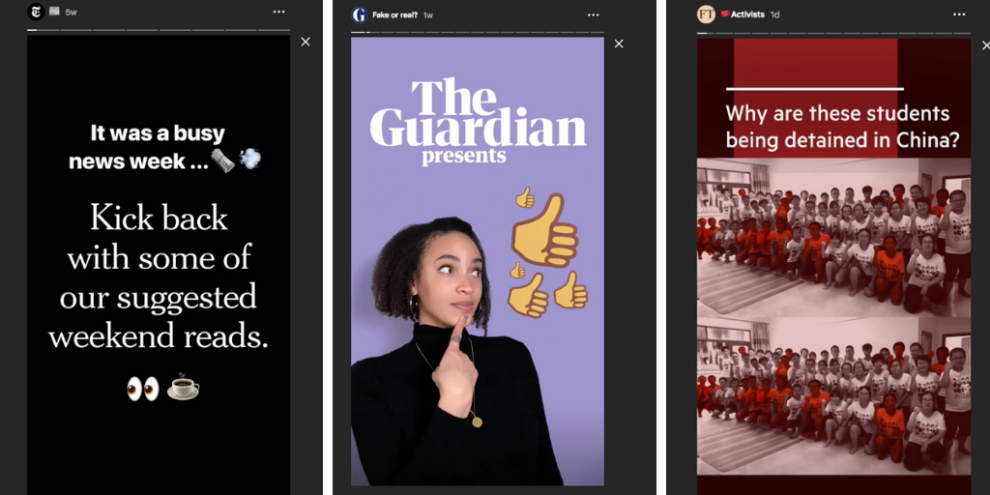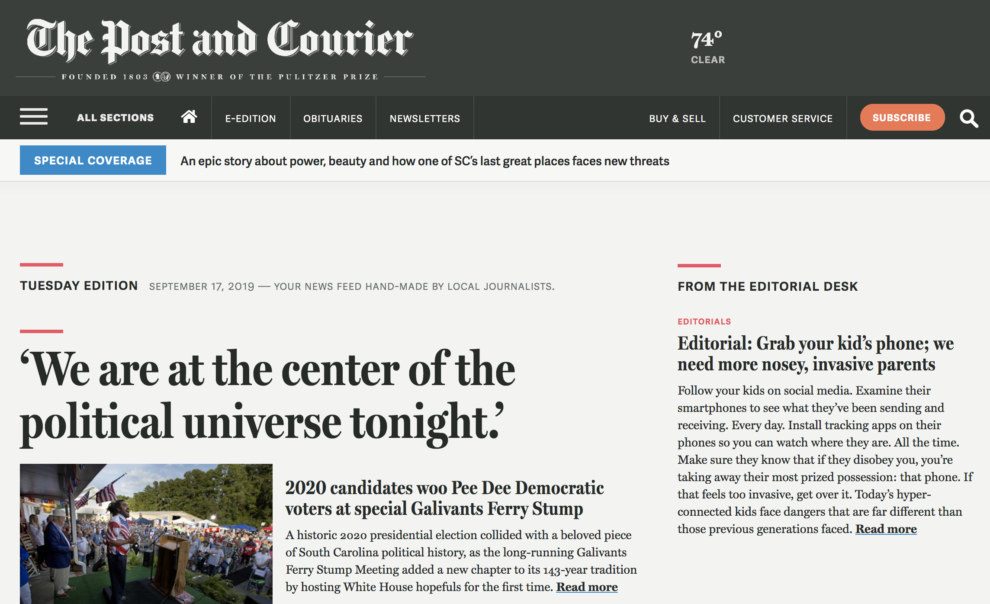In our conversations at Twipe, many people ask us what actually are editions? So with this article, we want to answer this.
Defining the edition concept was simple in yesterday’s print world; the newspaper edition was the printed product that landed on your doorstep every morning. However, defining what an edition is in today’s digital world is not as straightforward. With the first newspaper having been published in 1605 in Antwerp — not too far from Twipe’s office — the news media industry has over 400 years of experience with the edition concept.
The power of an edition has endured at The Times for more than 230 years. Our challenge is to update this concept for the digital age: to put readers first and cut through the babble.
John Witherow, Editor of The Times
A true understanding of the edition concept is needed so that publishers can bring these learnings to the digital space as well. Think about the painstaking attention to detail that has gone into laying out the daily edition over the years — in the print world, people who are hired to layout newspaper pages are responsible for only a handful of pages each day. This doesn’t have to be lost just because print is no longer the main way people get news – we can replicate this experience in digital, in a valuable way that readers find worth paying for.
Today we’re exploring the main types of editions in the digital world:
- Replica of print
- Digital native editions
- Newsletters
- Other emerging edition formats
Is this story capturing your attention?
"(Required)" indicates required fields
Replicating print editions in digital
The most common digital edition format today is what we at Twipe call the ‘Replica Edition‘. It’s a true one to one replication of the print newspaper. For most newspapers, this is still the base form of edition products in their digital offering.
This product usually has a rather loyal audience, making it a great retention product. Being the product your most loyal readers see every day means it requires attentive product development. Most often it is enriched with article lightboxes allowing for a smoother digital reading experience (seen in the far right image below) or other content enrichment options such as extra picture galleries, video streams, links to web content or to HTML5 infographics. Most often replica editions are brought to readers in the form of iOS or Android apps, however on our platform we see WebApp Replica Editions gaining in popularity.

While Replica Editions are just now gaining popularity in the US, across the Atlantic studies have found that 34% of European publishers see digital replicas as their biggest source of additional revenue, more so than even other news apps and websites.
Digital native editions
In Europe especially, digital editions have matured beyond the pure replica format. We observe two types of this format. One is a digital edition that takes the same content as the print edition and using a set of templates creates a digital edition specifically optimised for reading on smartphones. At Twipe we call this type of digital edition “NextGen“. The other is digital-only editions which are completely new digital products that respect the edition structure and characteristics but have no print counterpart. You can see this in examples such as The Economist’s Espresso or La Matinale du Monde. Last year we explored this trend in depth in the first chapter of our research series “Reinventing Digital Editions“.

This type of digital edition format allows for the addition of more videos, games, and other interactive content. On our platform, we’ve seen publishers that add NextGen editions to their digital strategy increase reading time by 20%.
The rise of newsletters
Newsletters are nothing new but until recently they have only been viewed as a way to get readers to your website. However we’re seeing the emergence of media products that exist primarily as newsletters such as theSkimm or Morning Brew. This supports the idea that newsletters are essentially digital editions, using email as the distribution channel.
Just like print newspapers, successful newsletters come at a regular frequency, at a predictable time and with specially selected content in a well-designed format. Newsletters are also unique in this space as they are well suited for developing habits in readers that will convince them to become paying subscribers. While most publishers lock their ePapers to subscribers-only, newsletters are still often seen as a way to push readers further down the subscription funnel.

Readers themselves are also turning to their inboxes more often for news, with a Reuters report finding that 25% of Americans choose email as their preferred starting point for news, with the French and Danes close behind, at 21% and 24% respectively. Føljeton, a Danish news site, realised its readers were more interested in their newsletters so they even pivoted to become a newsletter company.
Our recent work with The Times and The Sunday Times have found newsletters to be particularly effective in reducing churn as well. In a one-year project we have named “JAMES, Your Digital Butler“, automatically-created personalised newsletters were able to reduce churn by 49%.
New types of digital editions emerging
While the previous three types are the most popular forms of digital editions today, there is still a wide range of innovations and experiments that follow the principles of edition products.
One interesting example is the ‘stories‘ format, which is predicted to surpass feeds as the main way people share news with friends this year. Already on Instagram we see publishers such as The New York Times, The Guardian, and The Financial Times experimenting with this format.

But this is more than just a social media trend, Le Monde stands out for their innovative app “La Matinale du Monde” which has a stories-like format, with the added feature of Tinder-like swiping. We predict more publishers will experiment with this format as new technology comes out on the market for hosting ‘stories’ on publishers’ own websites directly.
Publishers are even experimenting with making their website, traditionally a newsflow product, into an edition as well. In the US, The Post and Courier relaunched their website to feature a new edition on its homepage each day. Featuring hand-picked stories by local journalists, the team believes this edition-format will help make their homepage a “destination” for their readers.

This shift to an edition-centered business philosophy is not only seen with newspapers, we see a comeback for this in the video and audio worlds, with Netflix investing more in their series and podcast episodes becoming more and more popular. As the benefits of editions become more apparent to publishers, we are excited to see what other types of digital editions emerge.
This article was written by Mary-Katharine Phillips, Media Innovation Analyst at Twipe from 2017 – 2021.
Did you find this story interesting?
"(Required)" indicates required fields
Other Blog Posts

Stay on top of the game
Join our community of industry leaders. Get insights, best practices, case studies, and access to our events.
"(Required)" indicates required fields

